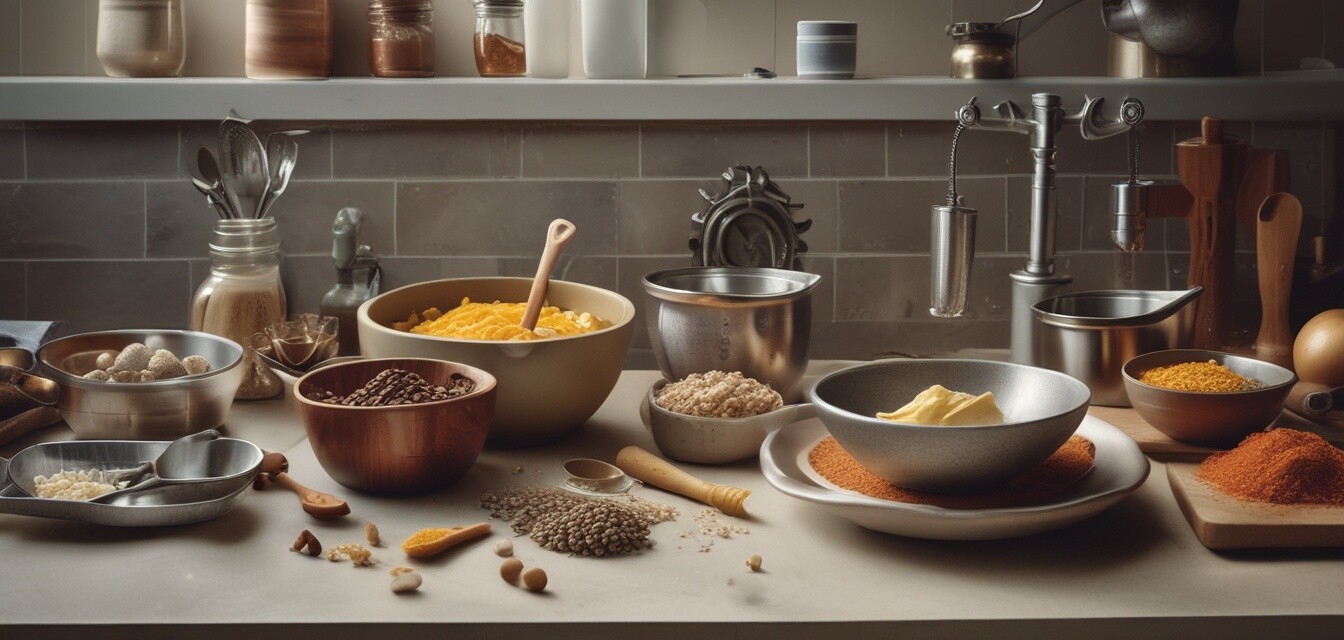
Disclosure: The FTC requires that this article indicate that it was created using AI and is not based on personal experience. It includes affiliate links, which means we may earn a commission if you purchase through these links at no extra cost to you. As Amazon Associates, we earn from qualifying purchases. Product recommendations and endorsements were generated by AI and do not reflect personal opinions or real-world use.
Measuring Ingredients for Bulk Cooking
Key Takeaways
- Accurate measurement is crucial when cooking in large batches.
- Using the right tools can save time and improve recipe accuracy.
- Understanding different measuring techniques for solids and liquids is key.
- Consistency in measurements leads to better overall results.
- Employing proper scaling techniques is beneficial when converting recipes.
Cooking for large groups is both an art and a science. One of the most critical aspects of bulk cooking is accurately measuring ingredients. This not only ensures that recipes turn out as intended but also saves time and minimizes waste. In this article, we will explore the best methods for measuring ingredients efficiently, along with tips and techniques that will help you master the art of bulk cooking.
Why Accurate Measurements Matter
When preparing meals for a crowd, accurate measurements are essential for the following reasons:
- Consistency: Ensures each batch of food tastes the same.
- Safety: Particularly with baking, incorrect measurements can lead to disastrous results.
- Cost-Efficiency: Precise measurements help reduce waste while saving money.
- Time-Saving: Streamlined processes make cooking faster.
Common Measuring Tools
Here are some essential tools you'll want in your kitchen for measuring ingredients:
| Measuring Tool | Best For |
|---|---|
| Measuring cups (dry and liquid) | Flours, rice, liquids, and granular ingredients |
| Digital kitchen scale | All types of ingredients, especially solids |
| Measuring spoons | Smaller quantities of both dry and liquid ingredients |
| Cups for volume measurement | Larger quantities of liquids |
| Liquid measurement jug | Precise measurement of liquids |
Techniques for Measuring Dry Ingredients
Measuring dry ingredients requires a different approach compared to liquids. Follow these steps for the best results:
- **Fluff the ingredient**: Before scooping flour or powdered ingredients, use a spoon to fluff them up in the container.
- **Scoop and level**: Use a dry measuring cup to scoop the ingredient, then level it off with a straight edge for accurate measurement.
- **Avoid packing**: Avoid pressing or packing down the ingredient to ensure you use the appropriate volume.
Techniques for Measuring Liquid Ingredients
To measure liquids correctly, consider the following:
- **Use a clear liquid measuring cup**: This allows you to see the measurement markings easily.
- **Check at eye level**: Bend down or lift the cup to eye level for an accurate read on the measurement scale.
- **Pour slowly**: Add liquid gradually, and stop when you reach the desired measurement.
Scaling Up Recipes
When scaling up recipes for bulk cooking, it’s vital to maintain the correct proportions. Here are some tips:
- **Convert measurements carefully**: Use a reliable conversion chart to help with measurement adjustments.
- **Test new recipes**: When trying out a scaled-up recipe for the first time, consider running a smaller test batch.
- **Stay consistent**: Always use the same method of measurement for all ingredients to maintain uniformity.
Tips for Bulk Cooking Success
Helpful Tips
- **Prepare ingredients in advance**: Pre-measure and organize your ingredients before starting to cook.
- **Maintain cleanliness**: Keep your work area clean for seamless preparation.
- **Make lists**: Use ingredient lists to avoid overlooking anything important.
- **Batch cooking**: When possible, cook in batches to streamline the process and save energy.
Conclusion
Measuring ingredients accurately is crucial when cooking for groups, providing consistency and enhancing the quality of your meals. By understanding the right techniques and utilizing the proper tools, you can ensure your bulk cooking endeavors are successful and enjoyable. For further insights on preparing for large gatherings, check out our articles on buying guides and other tips and techniques tailored for cooking for groups.
Pros
- Consistent results across recipes
- Reduces food waste
- Saves time during preparation
- Enhances flavors and textures
Cons
- Can require additional tools and space
- Involves more time upfront to measure accurately
- Scaling recipes can be tricky